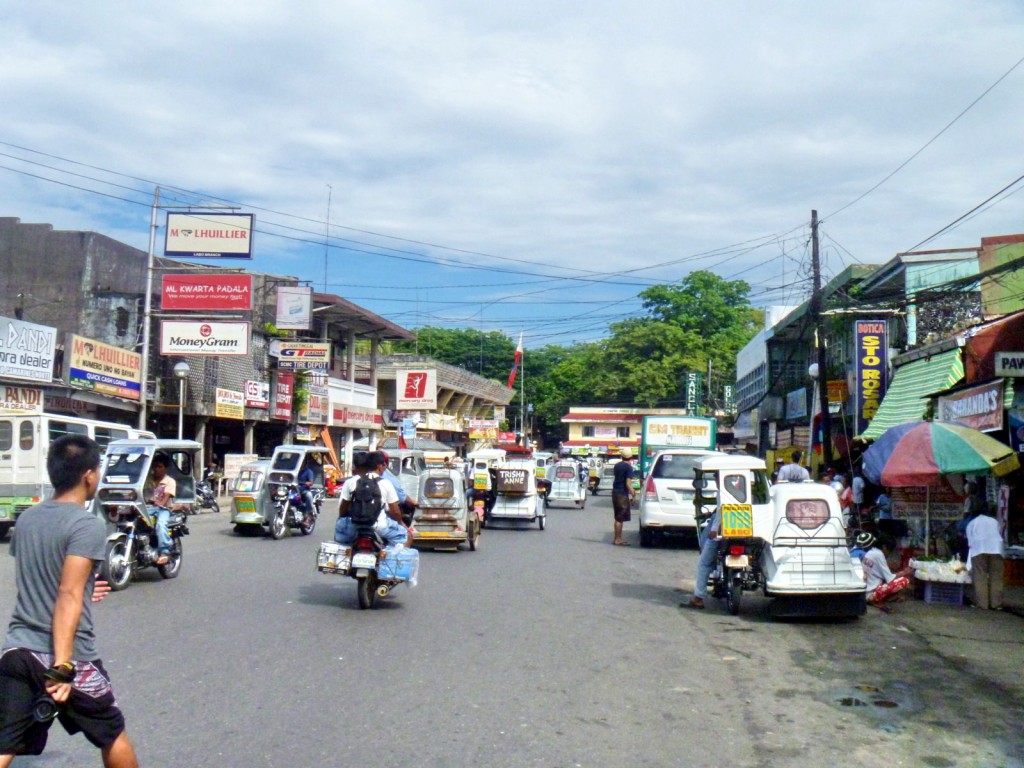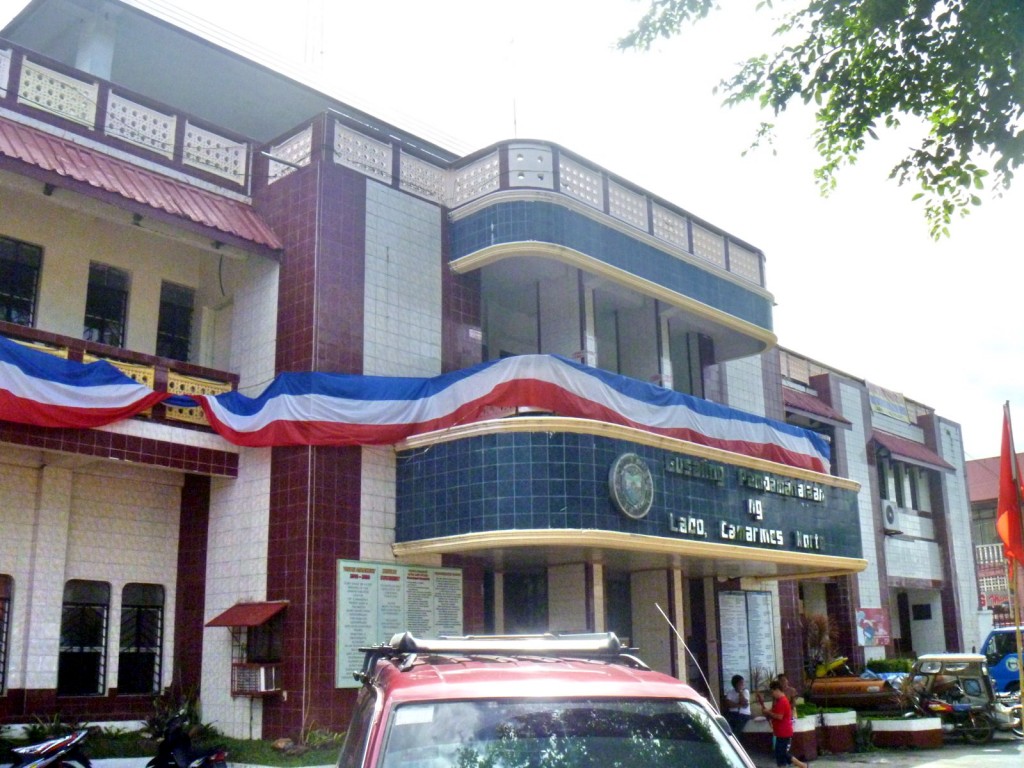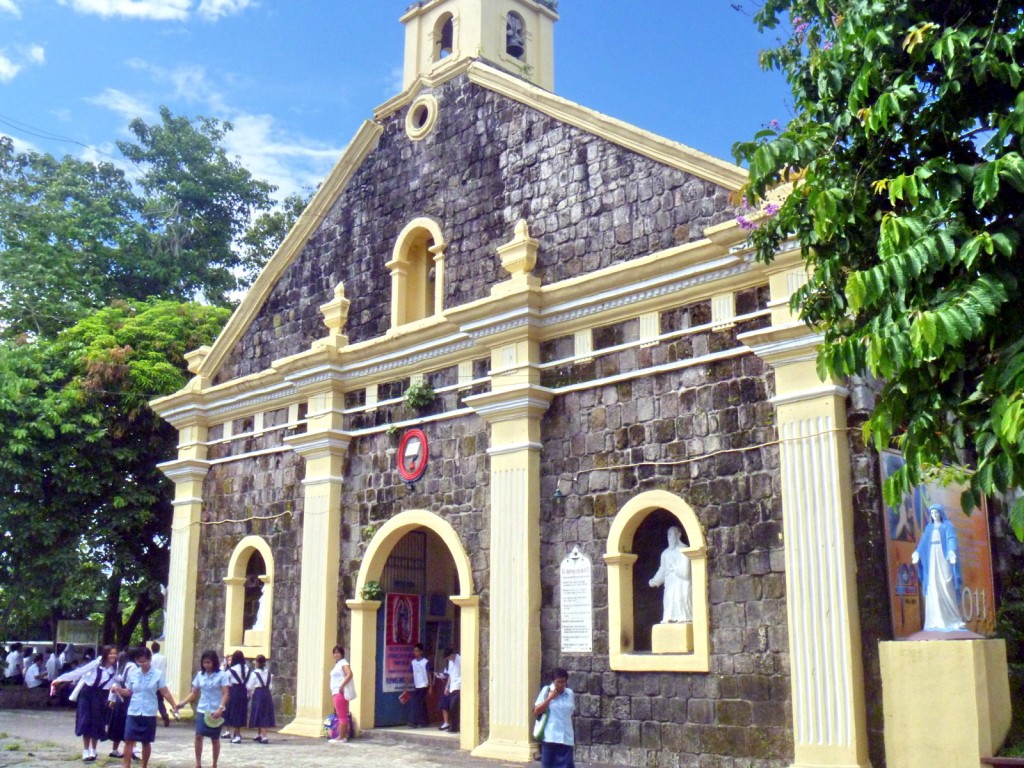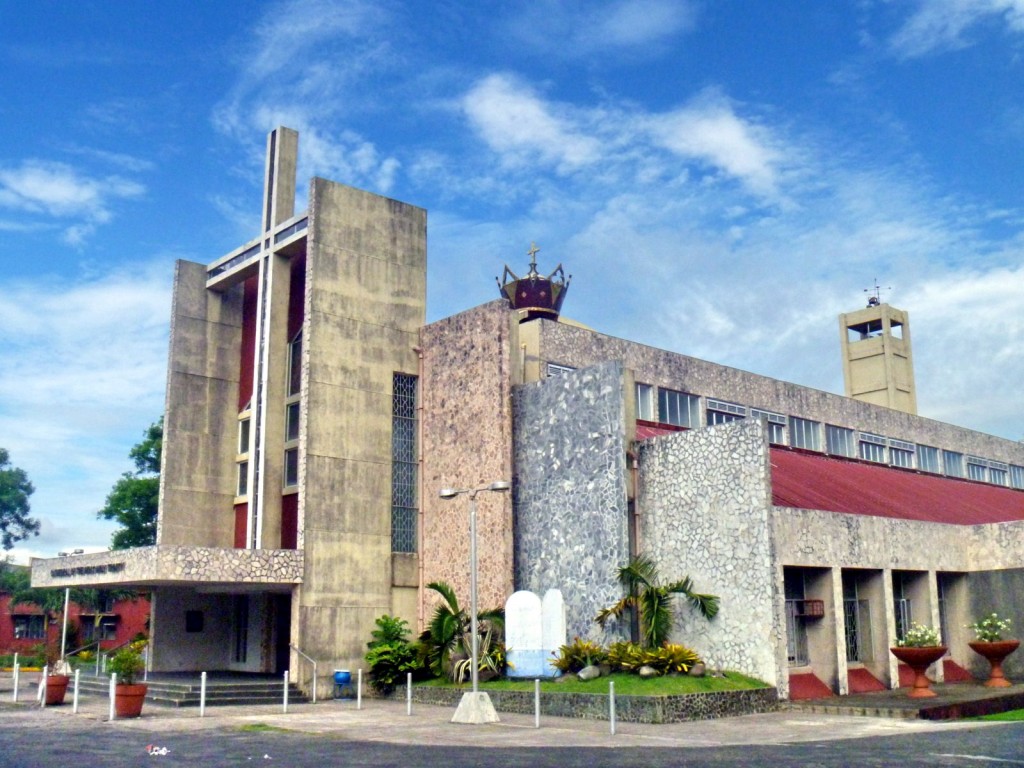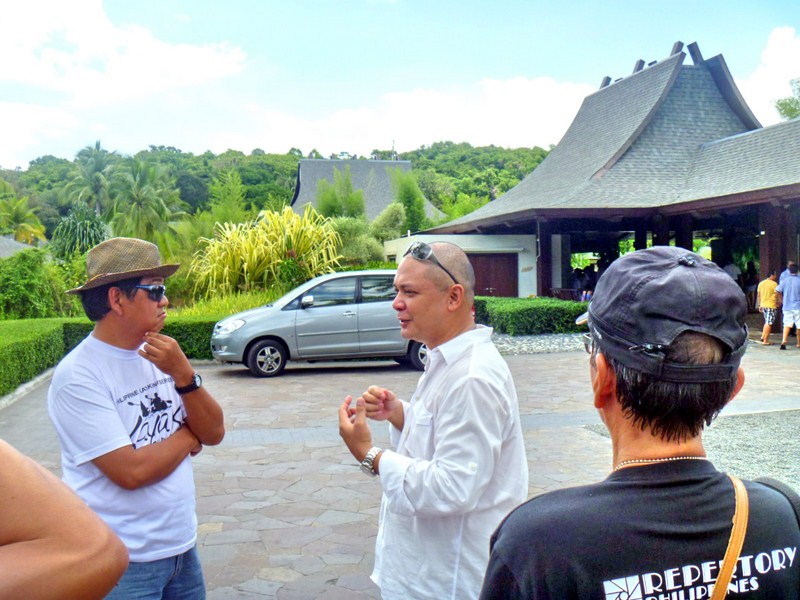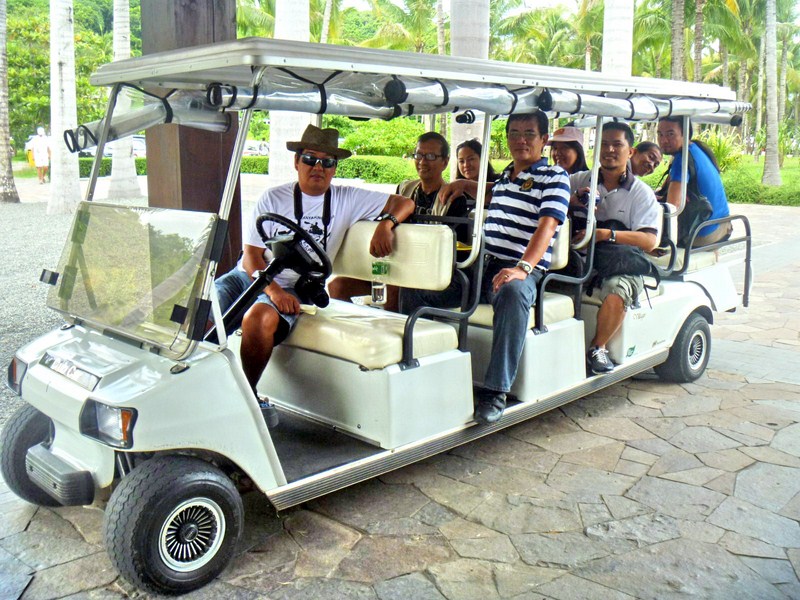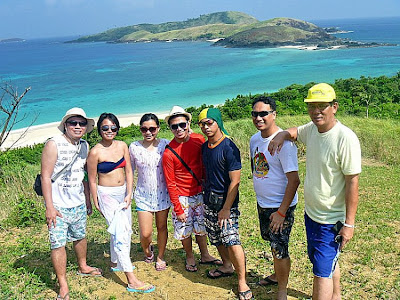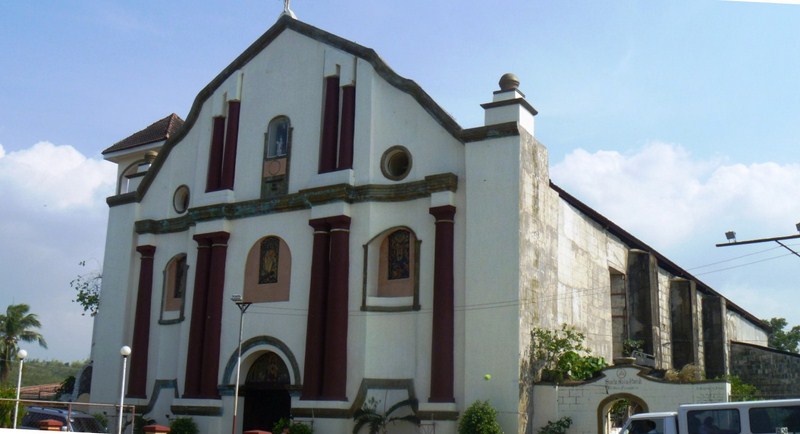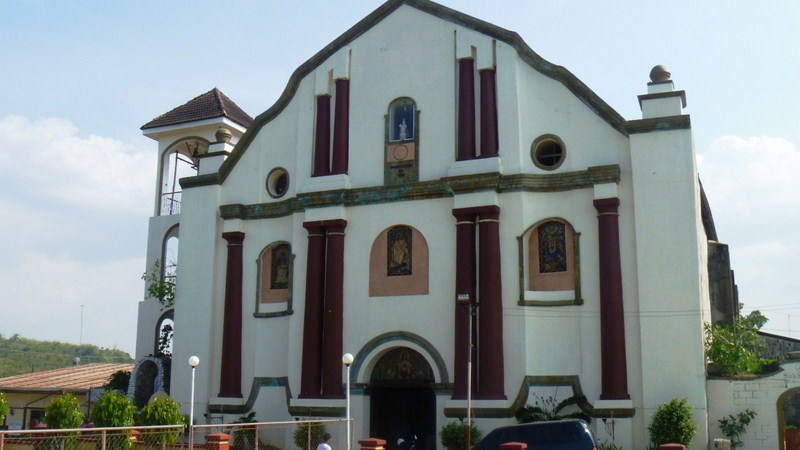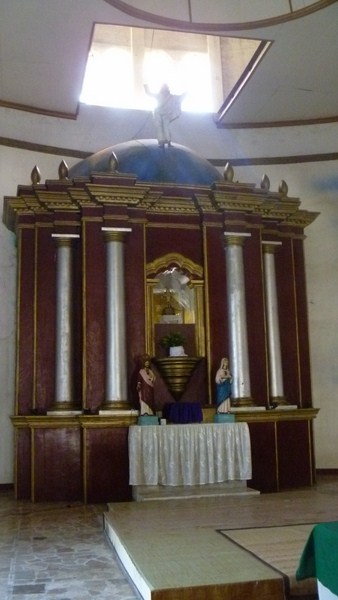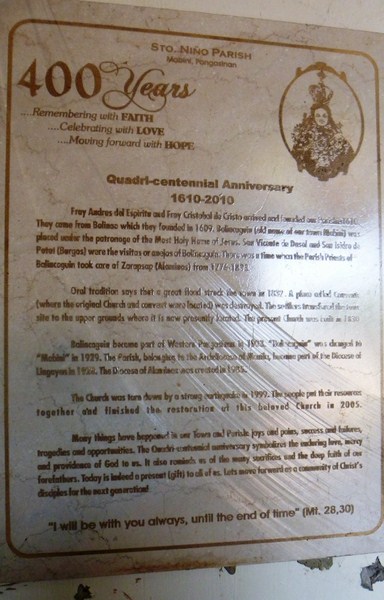 |
| Pinagkastilyuhan Island |
After returning to our campsite from our hilltop trek, we proceeded to pack up our stuff as we were to have our lunch at the mainland in Vinzons town. We shoved off and said goodbye to Tinaga Island by 11 AM but it seems our hunger for islands to explore hasn’t been sated. With some extra gas to burn and lots of enthusiasm, in spite of the overcast skies, we leisurely made our way to the privately-owned (by a Dr. Valencia) Pinagkastilyuhan Island (also called Cinastilyohan Island), making a brief stopover to photograph some goats sheltering on rocky outcrops on another island. After a 30 min. trip, we made soon espied Pinagkastilyuhan Islandbut couldn’t make landfall as the water was too shallow for the boat to navigate.
 |
| Wading shallow waters to get to the island |
Thus, we had to disembark from the boat some distance from the shore, me, Bernard, Karla, Lan, Debbee and Angel having to wade through ankle deep to sometimes waist deep waters to get to shore. It was already drizzling when we arrived, prompting Lee decided to stay behind in the boat to avoid drenching his camera. I was the first to make it to shore, the others soon following my lead. The sand, though not as white as in Mahabang Buhangin, was just as fine and inviting. However, prior to exploring the island, Debbee had to get clearance from the island’s lady caretaker, it being a privately-owned island. We went maybe a fourth of the way around the island, where two islands beckon offshore. The nearest seemed reachable but wading towards it was impossible as, halfway there, the water already reached up to my neck. So near yet so far.
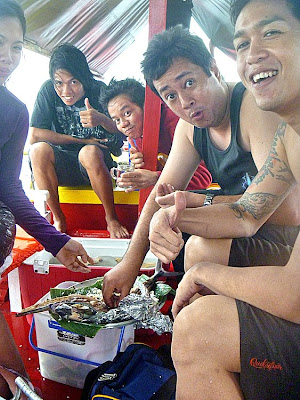 |
| Dining, kamayan style, on grilled fish |
After some photo ops, we returned to where we landed and waded back to the boat. While we were gone, Lee wasn’t idle, buying 5 large pieces of fish and a squid, from some passing fishermen, for the rock-bottom price of PhP100. As soon as we raised anchor, Lee had this fresh catch grilled by the boatmen on a portable stove. It was now noontime and time for lunch and, soon enough, we were dining on this feast, kamayan style, which we complemented with leftover fried rice.


